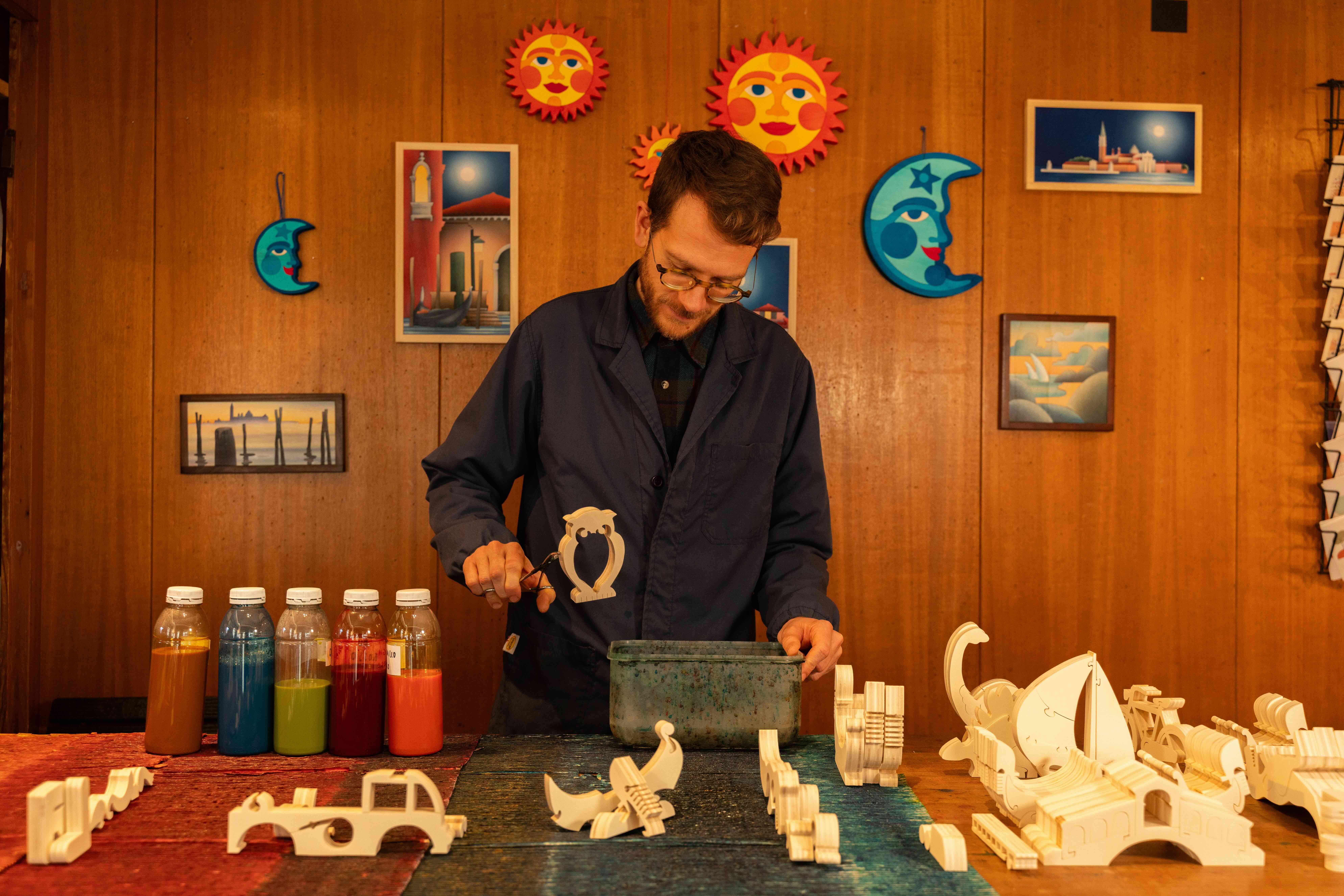Your cart is currently empty!
The creative process
Our objects are wooden puzzles that we personally make in the workshop in San Basilio and in the shop in San Barnaba. They are designed to give shape to images of the city, Venetian glimpses and imaginative subjects, bringing a little piece of Venice into the homes of those who choose them.
Here you can discover every step of the process we follow.
Basilica di San Marco: from raw object to colored result
FROM THE WOOD PANEL
In our workshop, each creation comes to life from poplar plywood boards. This wood, from a fast-growing plant, is an environmentally friendly and sustainable choice. Poplar also has a remarkable ability to store carbon dioxide (CO²), is light but strong, easy to work with, and provides a smooth and even surface. Its versatility allows us to offer you brightly colored, durable and environmentally friendly products.
THE DRAWING.
The first stage of processing involves gluing the design onto the wooden board.
The designs used belong to a repertoire built up over nearly fifty years of activity, constantly enriched with new ideas.
Through this combination of tradition and innovation we create unique pieces that tell a story and combine craftsmanship experience with our desire to bring sought-after, colorful and quality objects into your homes.
THE CUT
We personally cut all the wooden objects, which you see in the shop, in our workshop in San Basilio, a few streets away. We use an industrial electric scroll-saw: following the glued drawing and thanks to the very fine blade of this tool, we are able to achieve a precise and smooth cut. The scroll-saw has a vertical oscillating blade as we guide the piece of wood to cut following the lines of the drawing. How do we do it? Well this is the secret of the craftsman’s hands.
COLORFUL PUZZLES
The cut object is then freed from the wooden board. But holding the final form together are the precisely designed joints, ensuring that each individual piece can be joined to the others solidly and harmoniously.
The final step is color, which we apply in two ways: by dipping in food coloring, to get a full, non-toxic tint, or by airbrush, to paint our pictures with delicate hues.
If we have intrigued you, we look forward to seeing you in the shop to discover the timeless charm of wood and traditional craftsmanship!
